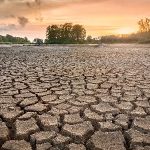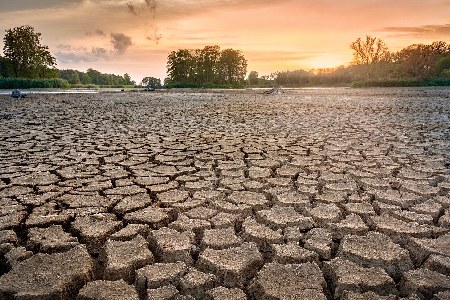


Taking care of the relationship between health and the environment is essential to avoid thousands of deaths a year.


From water to air, nature is essential to safeguard our well-being. Sometimes we forget that nature is not only something beautiful that surrounds us: it is the basis of our well-being. Therefore, if we take care of the environment we also take care of our health. The interconnection is evident in such fundamental aspects as the quality of the air we breathe, access to clean water and the biodiversity that sustains ecosystems. By protecting our natural environment, we are, in effect, protecting our own well-being and ensuring a sustainable future for generations to come.
A sick environment makes us sick
23% of all global deaths are related to environmental factors, according to the World Health Organization (WHO). The United Nations Environment Program (UNEP) assures that the degradation of the natural world due to human activity is causing a multiple crisis that affects both human well-being and the planet.
Deforestation and ecosystem degradation increase exposure to pathogens and can trigger zoonotic diseases (originating in animals that pass to humans) such as COVID-19.
Air pollution is one of the greatest environmental risks to public health. Every year about 7 million people die from being exposed to fine particles in the air, such as PM2.5 emitted by combustion engine vehicles or various industrial activities, according to the WHO. These particles penetrate deep into the lungs and cardiovascular system, causing various serious diseases, such as lung cancer or heart attacks.

 Damaged natural environments are directly linked to various conditions. Lack of access to clean water and adequate sanitation is one of the main causes of diarrheal diseases, which kill one and a half million people each year, most of them under five years of age. Dengue, malaria and Zika are transmitted by mosquitoes that thrive in areas with poor water conditions. With global warming, furthermore, these pests are expanding into previously unaffected areas.
Damaged natural environments are directly linked to various conditions. Lack of access to clean water and adequate sanitation is one of the main causes of diarrheal diseases, which kill one and a half million people each year, most of them under five years of age. Dengue, malaria and Zika are transmitted by mosquitoes that thrive in areas with poor water conditions. With global warming, furthermore, these pests are expanding into previously unaffected areas.
Speaking of the climate crisis, its consequences are also causing an increase in illnesses and deaths globally. Extreme weather events, such as heat waves, floods and droughts, can cause various injuries and accidents, respiratory and cardiovascular diseases, and increase food insecurity. The WHO estimates that during the current decade the climate crisis may cause around 250,000 deaths. A recent report from the Health for Right organization highlights that, in Europe, between May and September 2022, 61,672 heat-related deaths were recorded, with Italy, Spain and Germany being the most affected countries.
Measures to improve the environment that take care of our health
The Paris Agreement, signed in 2015, aims to stop global warming and therefore protect human health. According to a recent report published in the scientific journal The Lancet Public Healthif the objective of said Agreement is achieved, that is, limiting the increase in global temperature to 1.5°C, millions of deaths related to pollution and heat waves could be prevented.
The Sustainable Development Goals (SDGs) of the United Nations 2030 Agenda promote various measures to improve, in an interrelated way, the environment and human health.
In 2024, the WHO passed a historic resolution highlighting the urgent need to take decisive action against the health risks of the climate crisis. In 2022, the United Nations declared access to a “clean, healthy and sustainable environment” a universal human right. Although it is not a binding resolution, those responsible believe that it will help UN member states promote measures to improve the environment and thus the health of citizens.
In Spain, the Strategic Health and Environment Plan 2022-2026 of the Ministry of Health establishes actions to reduce health damage from the main risks of environmental origin.
How we improve our health with a healthy environment

 Initiatives such as reforestation, protecting the oceans or reducing plastic pollution have the potential to improve the quality of life globally. The transition to renewable energy sources, such as solar and wind, is one of the basic measures being taken worldwide to reduce pollution and mitigate the effects of climate change.
Initiatives such as reforestation, protecting the oceans or reducing plastic pollution have the potential to improve the quality of life globally. The transition to renewable energy sources, such as solar and wind, is one of the basic measures being taken worldwide to reduce pollution and mitigate the effects of climate change.
More and more cities are adopting sustainable mobility policies, promoting the use of public transport and bicycles, and prohibiting the access of the most polluting vehicles. Thus, in addition to reducing polluting emissions, more active and healthy lifestyles are encouraged.
Eating fresh, local and seasonal foods, prepared in a way that respects the planet, or avoiding ultra-processed foods, whose production generates a large carbon footprint and a higher risk of obesity, type 2 diabetes and cardiovascular diseases, is essential to maintain a good physical and environmental health.
Living near green areas and being in contact with nature can significantly reduce levels of stress, anxiety and depression, as well as the risk of developing psychiatric disorders, according to various studies published in Environmental Health Perspectives.
Were you aware of the direct relationship between the environment and our health? Are you going to do something new from now on? Tell us!